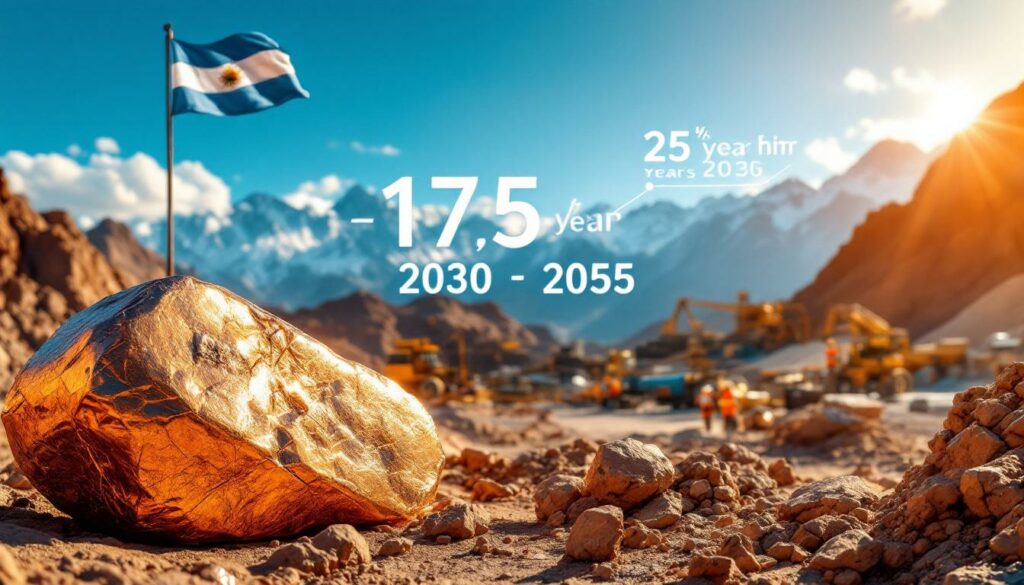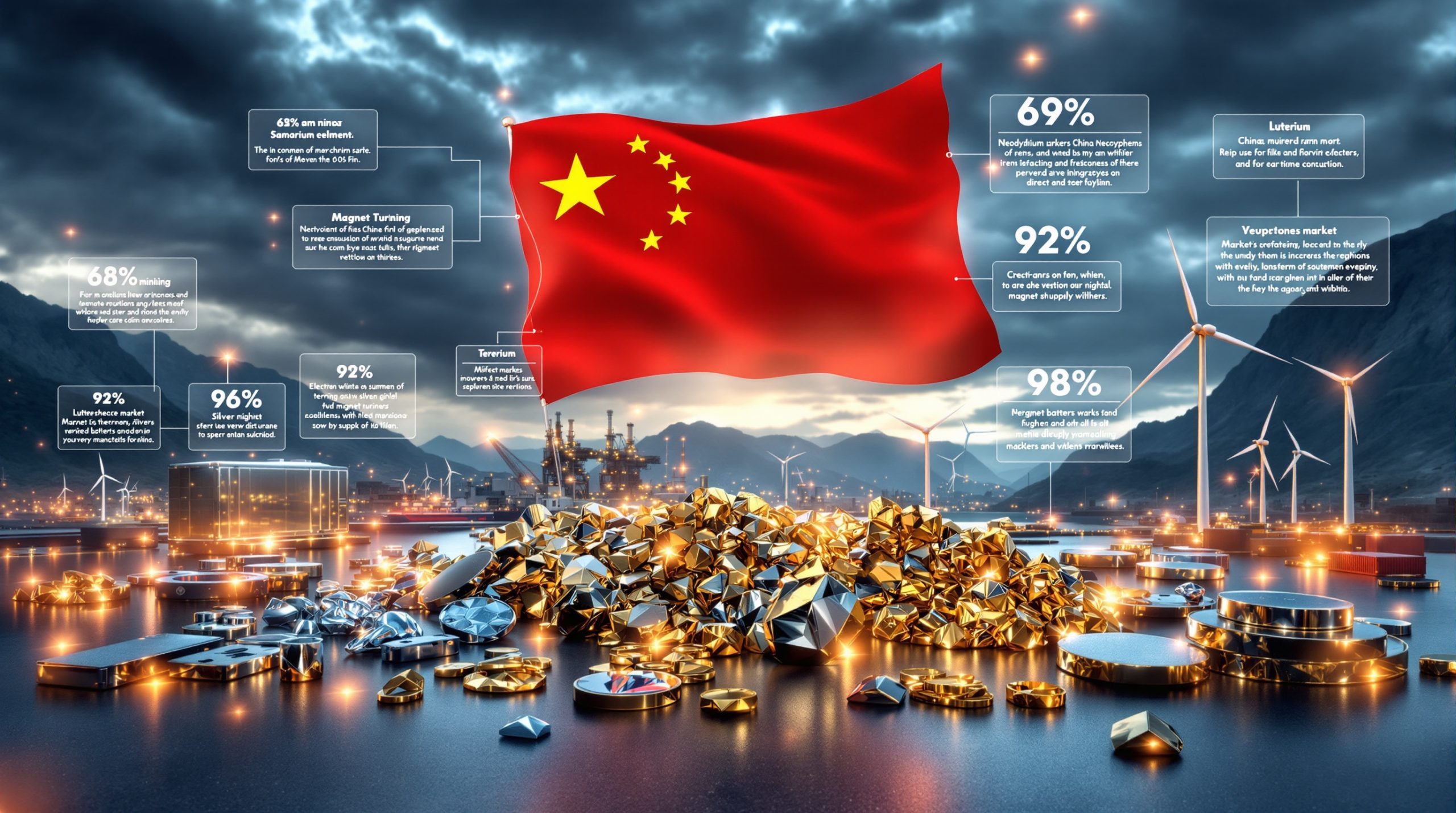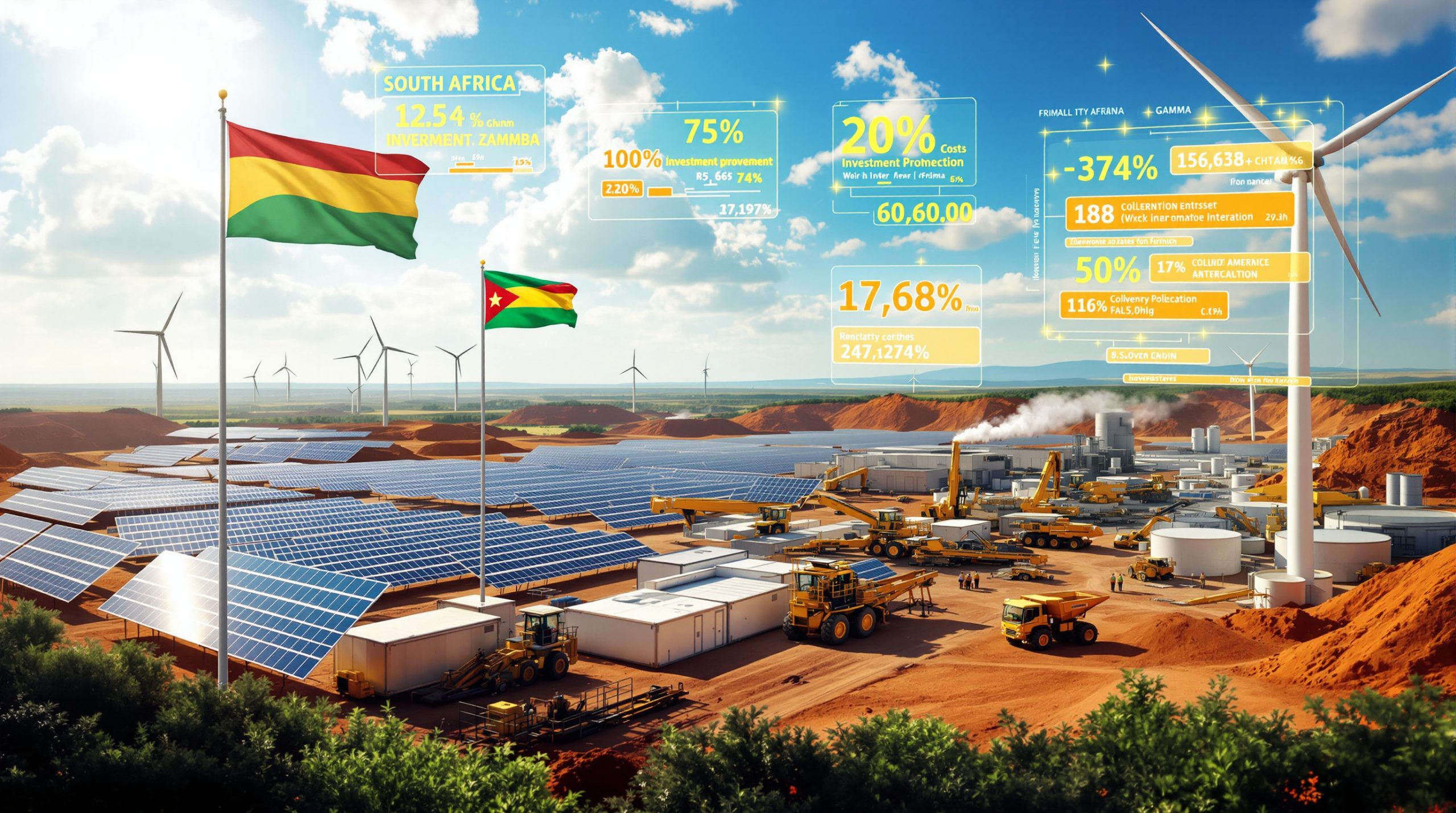How Has the BHP-Lundin Joint Venture Extended the Josemaria Copper Mine's Life?
The strategic partnership between BHP and Lundin Mining, operating as Vicuña Corp, has fundamentally transformed the outlook for the Josemaria copper project in Argentina. This landmark collaboration follows their earlier $3 billion acquisition of Filo Mining, cementing their commitment to South American copper development at a time when global copper supply forecast continues to rise.
Recent geological assessments and engineering optimizations have yielded remarkable results for the project's future. The joint venture has successfully extended the mine's operational lifespan from the original 19-year projection to an impressive 25 years—representing a 31.5% increase in productive capacity over the mine's lifetime.
What Is the Josemaria Copper Project and Its New Timeline?
Overview of the Vicuña Joint Venture
The Vicuña Joint Venture brings together the operational expertise of Australian mining giant BHP with the regional knowledge and development capabilities of Canadian-based Lundin Mining. This partnership represents one of the most significant investment opportunities 2025 in South American copper development in recent years.
The joint venture structure allows both companies to share capital expenditure requirements while pooling technical resources. BHP contributes its world-class operational systems and economies of scale, while Lundin brings its proven track record of developing complex mining projects in challenging environments.
"Thursday's data could help Vicuña's plans to apply to join Argentina's Large Investment Incentives Regime (RIGI), promoted by libertarian President Javier Milei's government to attract investments," reported Mining.com in July 2025.
Extended Mine Life and Increased Production Capacity
The most striking outcome of the joint venture's reassessment has been the substantial extension to Josemaria's operational lifespan. Through comprehensive geological modeling and resource optimization, the partnership has identified additional exploitable resources that support a 25-year operation—six years beyond the original 19-year plan.
This extension creates significant value through:
- Extended revenue generation: Six additional years of production at full capacity
- Improved amortization: Capital costs spread over longer operational period
- Enhanced resource utilization: More efficient extraction of the deposit
- Stronger community benefits: Longer-term employment and regional development
Equally impressive is the confirmed processing capacity of 175,000 metric tons per day, positioning Josemaria among the highest-throughput copper operations globally. This processing rate exceeds approximately 75% of operating copper mines worldwide, demonstrating the scale and significance of the project.
Where Is the Josemaria Project Located and What Makes It Strategic?
Geographic Positioning and Border Significance
The Josemaria copper-gold-silver project occupies a strategic position in Argentina's northwestern San Juan province, situated near the Chilean border. This location is particularly significant as it places the project within the prolific Andean Copper Belt, a geological formation that hosts some of the world's largest copper deposits.
The project's proximity to Chile—the world's leading copper producer—creates unique opportunities for operational synergies, knowledge sharing, and potential infrastructure collaboration. This cross-border positioning allows the joint venture to leverage best practices from both countries' mining sectors.
The high-altitude Andean setting (approximately 4,500 meters above sea level) presents both challenges and advantages:
- Challenges: Harsh climate conditions, limited existing infrastructure
- Advantages: Exceptional mineral grades, minimal population displacement, reduced environmental conflicts
Argentina's Mining Development Strategy
Argentina's government has identified mining development along its Chilean border as a strategic priority, particularly in provinces that have historically seen limited mining activity despite their considerable mineral potential.
"Argentina's government is seeking to promote mining in its provinces along the Chilean border, which have so far seen limited development, to boost foreign-currency flows and shore up its economy," according to Mining.com.
This push comes as Argentina seeks to diversify its economy and generate much-needed foreign currency inflows. The country's economic challenges in recent years have heightened the importance of developing its natural resources, with copper representing a particularly valuable opportunity given global demand projections.
The government's mining strategy includes:
- Streamlined permitting processes in border regions
- Infrastructure development initiatives
- Fiscal incentives for major projects
- Cross-border cooperation frameworks
What Are the Project's Current Status and Development Timeline?
Pre-Construction Phase and Production Timeline
Josemaria currently stands in the pre-construction stage of development, with full production targeted to commence in 2030. This timeline represents a carefully sequenced approach to bringing the massive project online while ensuring all technical, environmental, and social considerations are thoroughly addressed.
The critical path for development includes:
- Technical report submission (scheduled for first half of 2026)
- Detailed engineering and design (2026-2027)
- Major equipment procurement (2027-2028)
- Construction phase (2028-2030)
- Commissioning and ramp-up (2030)
The technical report due in 2026 will be particularly significant as it will establish definitive timeframes, production projections, and capital requirements. This comprehensive document will incorporate findings from ongoing geological assessments, metallurgical testing, and engineering optimizations.
Environmental and Regulatory Progress
The joint venture has demonstrated its commitment to environmental stewardship through rigorous impact assessment and mitigation planning. Recently, Vicuña Corp presented new studies to provincial authorities, marking the second formal update to its environmental impact report.
A central focus of these environmental discussions has been water management—a critical consideration for mining operations in the region's arid climate. The joint venture has developed comprehensive plans for:
- Water recycling and conservation technologies
- Minimizing freshwater consumption
- Protecting groundwater resources
- Managing seasonal precipitation events
These environmental initiatives align with both regulatory requirements and international best practices for responsible mining development. The project's environmental strategy incorporates lessons learned from other high-altitude Andean mining operations, adapting proven solutions to Josemaria's specific context.
What Resource Potential Does the Josemaria Project Hold?
Copper and Precious Metals Reserves
The Josemaria project represents one of the most significant undeveloped copper resources globally. Assessments conducted in early 2024 estimated that the combined deposits at Josemaria and the neighboring Filo del Sol property (also controlled by the joint venture) contain approximately:
- 13 million metric tons of measured copper resources
- 25 million metric tons of inferred copper resources
- Substantial gold and silver resources as valuable by-products
These figures position the combined Josemaria-Filo district among the largest undeveloped copper resources worldwide. The multi-metal nature of the deposit—with significant gold and copper exploration content—enhances the project's economic profile by providing valuable by-product credits that improve the overall cost position.
The deposit characteristics include:
| Metal | Measured Resources | Inferred Resources | Primary Zones |
|---|---|---|---|
| Copper | 13 million metric tons | 25 million metric tons | Supergene, hypogene |
| Gold | Significant (values pending final assessment) | Distributed throughout | Associated with copper |
| Silver | Significant (values pending final assessment) | Higher grades in certain zones | Associated with copper |
Significance to Argentina's Copper Industry
The development of Josemaria represents a transformative opportunity for Argentina's mining sector. The country has not produced copper commercially since 2018, when the Bajo de la Alumbrera mine ceased operations after nearly two decades of production.
With Josemaria and other projects in the development pipeline, Argentina has the potential to emerge as a significant global copper producer. Industry analysts suggest that full development of Argentina's copper potential could elevate the country to rank among the world's top 10 copper producers—a dramatic shift from its current absence in global copper markets.
This potential emergence as a copper producer comes at a particularly opportune time, as global demand for the metal continues to grow driven by:
- Renewable energy infrastructure
- Electric vehicle manufacturing
- Power grid expansions
- Electronics production
How Does the Project Align With Argentina's Investment Incentives?
Large Investment Incentives Regime (RIGI)
The recent data released by Vicuña Corp regarding the extended mine life and increased resource potential could significantly strengthen the company's application to join Argentina's Large Investment Incentives Regime (RIGI). This program represents a cornerstone of President Javier Milei's economic strategy to attract substantial foreign investments.
RIGI offers qualified projects several valuable benefits:
- Tax stability provisions that protect against future increases
- Customs advantages for importing equipment and technology
- Simplified foreign exchange access
- Accelerated depreciation allowances
- Streamlined permitting processes
For capital-intensive projects like Josemaria, with multi-billion-dollar development costs and long payback periods, these incentives can substantially improve economic returns and reduce investment risk.
Government Support and Economic Impact
President Milei's libertarian administration has been actively courting mining investment as part of its broader economic strategy to address Argentina's chronic financial challenges. The administration views large-scale mining projects as a pathway to:
- Generate foreign currency: Critical for stabilizing Argentina's currency
- Create high-quality employment: Both direct and indirect jobs
- Develop regional infrastructure: Roads, power, and communications
- Stimulate economic diversification: Supporting service industries
The Josemaria project embodies the type of long-term, large-scale investment that could provide sustainable economic benefits for Argentina over multiple decades. With its 25-year operational life, the project offers stability and predictability that aligns with the government's economic objectives.
What Challenges and Opportunities Face the Josemaria Project?
Water Management and Environmental Considerations
The joint venture has identified water management as a critical focus area for the project's development. Mining operations in this arid, high-altitude region require sophisticated approaches to water usage, conservation, and impact mitigation.
Key water management strategies under development include:
- Closed-loop processing systems that maximize water recycling
- High-efficiency thickeners and filters to recover water from tailings
- Snowmelt capture and storage technologies
- Real-time monitoring systems for groundwater and surface water
- Adaptive management plans for drought conditions
These approaches aim to ensure sustainable water usage throughout the extended 25-year mine life while protecting local watersheds and downstream water users. The joint venture's environmental impact reporting has emphasized these water management measures as foundational to the project's sustainability strategy.
Infrastructure Development Requirements
The remote location of the Josemaria project necessitates substantial infrastructure investments to support both construction and operations. These infrastructure requirements include:
- Transportation networks: Access roads and material handling systems
- Power supply: High-voltage transmission lines and potential renewable generation
- Communication systems: Fiber optic and satellite connectivity
- Water supply infrastructure: Pipelines and storage facilities
- Personnel accommodations: Camp facilities and support services
While these infrastructure requirements represent significant capital costs, they also create opportunities for broader regional development that extends beyond the mine itself. Infrastructure investments made for Josemaria could benefit local communities, other industries, and future resource development in the region.
The joint venture is exploring innovative approaches to infrastructure development, including potential public-private partnerships and shared facilities with other mining operations in the region.
How Does Josemaria Compare to Other Copper Projects in the Region?
Regional Context and Competition
The Josemaria project is part of a growing trend of copper development in the Andean region, which hosts numerous world-class deposits across Chile, Peru, and Argentina. Chile, in particular, remains the world's dominant copper producer, with approximately 28% of global production.
Josemaria's competitive position is strengthened by several factors:
- Scale: Among the largest undeveloped copper resources globally
- Grade quality: Favorable copper grades with precious metal credits
- Metallurgy: Relatively straightforward processing requirements
- Jurisdiction: Improving investment climate in Argentina
Compared to aging Chilean operations facing declining grades and increasing depths, Josemaria offers the advantages of a new development with modern mine planning and technology. However, it also faces the challenges of greenfield development in a jurisdiction with less mining infrastructure than neighboring Chile.
Integration with Filo del Sol
A strategic advantage for the Josemaria project is its potential integration with the neighboring Filo del Sol property, also controlled by the Vicuña Joint Venture. This proximity creates numerous operational synergies and resource optimization opportunities:
- Shared infrastructure: Roads, power, and water systems
- Integrated processing: Potential for centralized processing facilities
- Operational efficiencies: Combined management and technical teams
- Sequential development: Optimized capital deployment timing
This integrated approach allows for more efficient development across both properties, potentially lowering production costs and improving capital efficiency. The joint development strategy represents a more holistic approach to resource development than traditional single-mine planning.
What Is the Global Significance of the Josemaria Copper Development?
Impact on Global Copper Supply
With global copper demand projected to increase substantially due to electrification and renewable energy transitions, the Josemaria project represents a significant addition to future supply. Industry analysts project copper demand growth of 2-3% annually through 2035, with accelerating growth in later years as energy transition efforts intensify.
The extended 25-year mine life ensures Josemaria will contribute to global copper markets during a critical period when:
- Many existing mines will be depleting
- Grade declines will affect production at mature operations
- Few other large-scale projects are in development
- Demand from clean energy sectors will be peaking
This timing positions Josemaria as a strategically important project for global copper supply security. The project's scale—processing 175,000 metric tons daily—means it will represent a material portion of new copper supply coming online in the 2030s.
Strategic Importance for BHP and Lundin
For the joint venture partners, Josemaria represents a cornerstone asset with strategic significance beyond its direct financial returns:
For BHP, one of the world's largest mining companies:
- Strengthens its copper portfolio as the company pivots toward "future-facing" commodities
- Diversifies its geographic footprint in Latin America beyond Chile
- Applies its operational expertise to a world-class new development
- Supports its stated strategy of focusing on tier-one assets in stable jurisdictions
For Lundin Mining, which has ambitious growth plans:
- Accelerates its strategy to become a top-ten copper producer
- Leverages its experience in developing and operating South American mines
- Provides a flagship asset with multi-decade production horizon
- Balances its portfolio with a significant new development project
The collaboration between these companies combines BHP's scale and technical capabilities with Lundin's agility and regional expertise—a partnership that positions Josemaria for successful development despite the challenges inherent in large-scale mining projects. This partnership exemplifies the type of strategic alliances that are increasingly important for copper investment insights in today's market.
FAQ: Josemaria Copper Project Development
When is the Josemaria mine expected to begin production?
Production at the Josemaria copper, gold, and silver mine is expected to commence in 2030, following the completion of construction and commissioning activities. This timeline depends on the technical report scheduled for submission in the first half of 2026, which will finalize development plans and schedules.
What is the daily processing capacity of the Josemaria operation?
The Josemaria project is designed to process approximately 175,000 metric tons of ore per day, making it a large-scale mining operation by global standards. This processing rate exceeds approximately 75% of current copper mining operations worldwide.
How much copper is contained in the Josemaria and Filo del Sol deposits?
Combined, the deposits contain approximately 13 million metric tons of measured copper resources and an additional 25 million tons of inferred copper resources, based on assessments conducted earlier in 2024. The project also contains significant gold and silver resources that will be recovered as valuable by-products.
What economic benefits might the Josemaria project bring to Argentina?
The project is expected to generate significant foreign currency inflows, create thousands of direct and indirect employment opportunities, stimulate regional infrastructure development, and potentially help position Argentina among the world's top copper producers after years without commercial copper production.
Ready to Discover the Next Major Mineral Discovery Before the Market?
Take advantage of Discovery Alert's proprietary Discovery IQ model that instantly identifies significant ASX mineral discoveries and transforms complex data into actionable investment opportunities. Explore our dedicated discoveries page to understand how major mineral discoveries have historically generated substantial returns for early investors.




